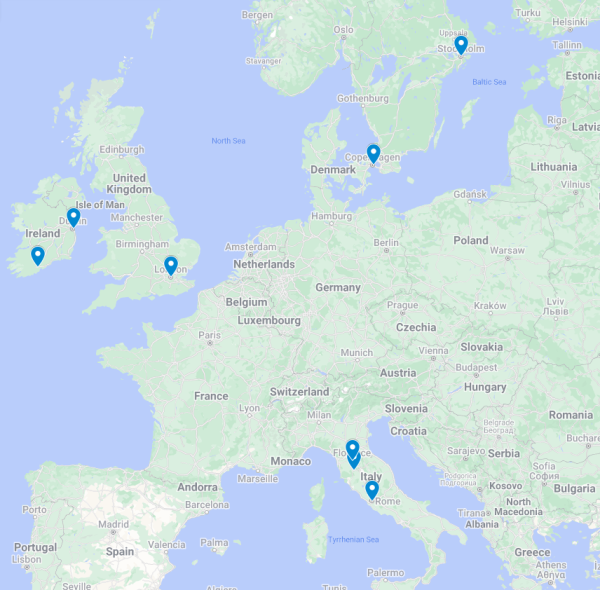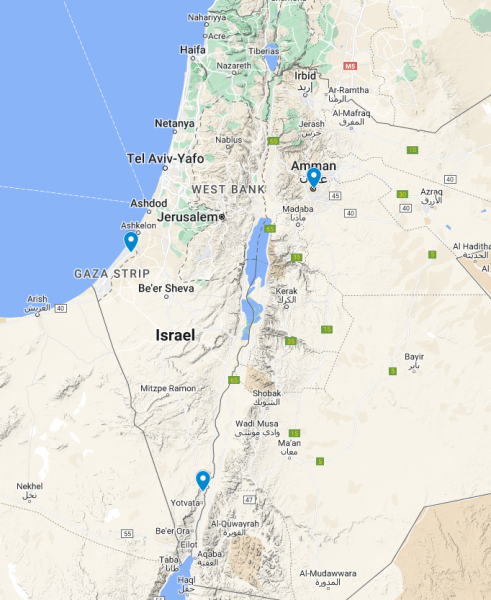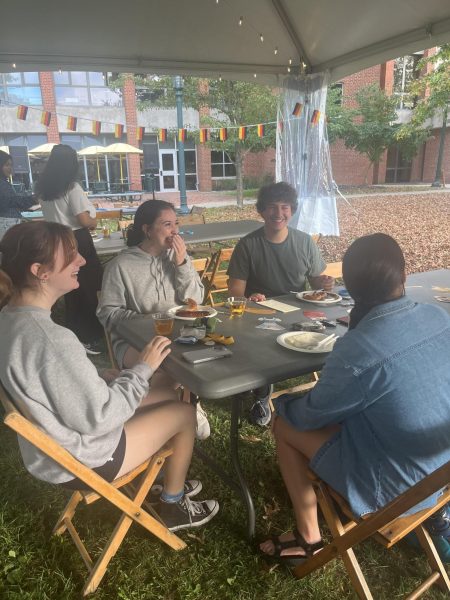Iranian protests: Fighting for women’s rights
On Sept. 13, Mahsa Amini, 22, was arrested in Iran for not wearing a hijab properly. Three days later, she died in police custody, sparking outrage and a series of ongoing protests about women’s rights both in Iran and worldwide.
“The state hasn’t made it a safe place for women to exist,” said Treasurer of the Islamic Cultural Association Hussain Minhas, ’24.
While it was ultimately Amini’s death that set off the protests, the political climate in Iran has been unstable for a while. According to Visiting Assistant Professor of History and Religious Studies Matthew Mitchell, a declining Iranian economy has been the cause for protests in the last few years.
“More recently, there have been protests almost every year since 2017 over prices for food and fuel, unemployment and so on,” Mitchell said.
Alternatively, Minhas pointed to the strict authoritarian nature of the state for the reason behind the protests.
“They (the Iranian government) really don’t care about people’s lives,” Minhas said. “It’s just an authoritarian state trying to maintain control over the people.”
The government has taken what some consider to be extreme steps in controlling these protests. According to the Washington Post, the Iranian government has shut down the internet in some parts of the country and sent out security forces that have beaten many protestors. These actions led opposition groups to pursue more extreme measures to share their messages.
According to the BBC, a resistance group known as “Adalat Ali” (Ali’s Justice), hacked into state television, protesting the state with captions like “our youths’ blood is dripping off your paws,” on Oct. 8.
This message in particular was a response to deaths of more than 150 protestors, many being beaten by Iranian security forces, since Sept. 17, according to the BBC. One such death was that of Sarina Esmaeilzadeh, 16, who was killed while protesting. Later on, the government covered up her death, coercing her parents into saying that she was suicidal and jumped off of a building, according to the Washington Post. Esmaeilzadeh’s death further fueled the outrage of protestors.
The government’s abuse of power in responding to these protests has led many to condemn it. Religious Studies major Fenn Kathman, ’23, believes that the government has handled the protests “horribly.”
“People want to be free,” Kathman said. “You can’t really control how people act, dress, talk, everything and then not expect them to fight back.”
They argued that the role of the government in reacting to protests is to keep people safe, not to shut down the protest entirely. Kathman connected the Iranian government response to these protests to similar Black Lives Matter protests during the Trump presidency, critiquing both governments of using force to overpower the people instead of working with them to make a change. They described such responses as “the complete opposite of a good idea.”
“I think they could handle it a lot better in the sense that they could work with the people,” Kathman said.
Kathman further condemned the government’s law forcing women to wear hijabs. They cited opposite laws in France and argued that both countries’ policies were wrong.
“There should be the ability to decide whether you want to wear (a hijab) or not,” Kathman said.
Minhas shared this opinion, adding on that countries like France and Israel are hypocritical in their support of the Iranian protesters when their laws restrict women’s choices in a similar manner.
Despite both viewing the laws as wrong, the two students held different views on their impact on women’s rights.
For Kathman, these laws and subsequent protests are yet another event in a trend of declining women’s rights worldwide.
“My friend likes to say that we are back in the sixties, but we don’t even have the fun dresses or the fun music,” Kathman said.
Minhas, on the other hand, believed that although these laws suppress women’s rights, overall the advances in women’s rights have outweighed the setbacks.
“Men in power are doing a lot to try and swing the direction of women’s rights back the other way, but I think that eventually it will turn in the right direction,” Minhas said.
Mitchell agreed with Minhas, stating that these protests showcase women working together to make a change in the world, and thus marking an important event in women’s history. He remarked, however, that it is important to note that wearing a hijab is not a sign of women’s oppresion.
“We shouldn’t conflate wearing the hijab with women’s repression generally,” Mitchell said, “The case of Iran, however, is different. In Iran, the mandatory nature of the hijab is used as a method to control women’s bodies.”
Women choose to wear hijabs for many reasons, including religious, nationalist and other personal reasons. As the New York Times explains, in Iran, wearing the hijab became a symbol of support for the caliphate during the reign of the shahs.
During his rule, the shah banned women from wearing hijabs as he wanted Iran to look more Western. After the Islamic Revolution, many chose to wear the hijab to show their support for the newly established government.
The complex history of the hijab in Iran shows that the issue is not the hijab, but strict laws requiring or banning it.
Both Minhas and Mitchell agreed that despite international pressures, Iran is unlikely to make any critical changes to their legal code.
However, there are many ways to support protesters and put more pressure on the government to produce change.
“The best thing (to do) would be to directly contribute to women’s organizations in Iran,” Minhas said.
Minhas also advocated for people to become more politically aware and active. Kathman shared this sentiment, encouraging younger generation to become more involved.
“If you can’t vote or don’t vote, then you are just kind of complicit,” Kathman said, “If you do vote and everyone else votes, then we can actually make change.”
Ultimately, while there are many competing viewpoints of the Iranian protests, one thing is for sure. Women around the world are joining together to fight for change. People are putting their lives on the line to make a difference. How far they will succeed is yet to be seen.
Multiple members of ICA who wear hijabs declined to comment for this story.

Caroline Maye is a first year from Chicago, Illinois. She plans to major in Political Science or History with a minor in Journalism in the Public Interest....








